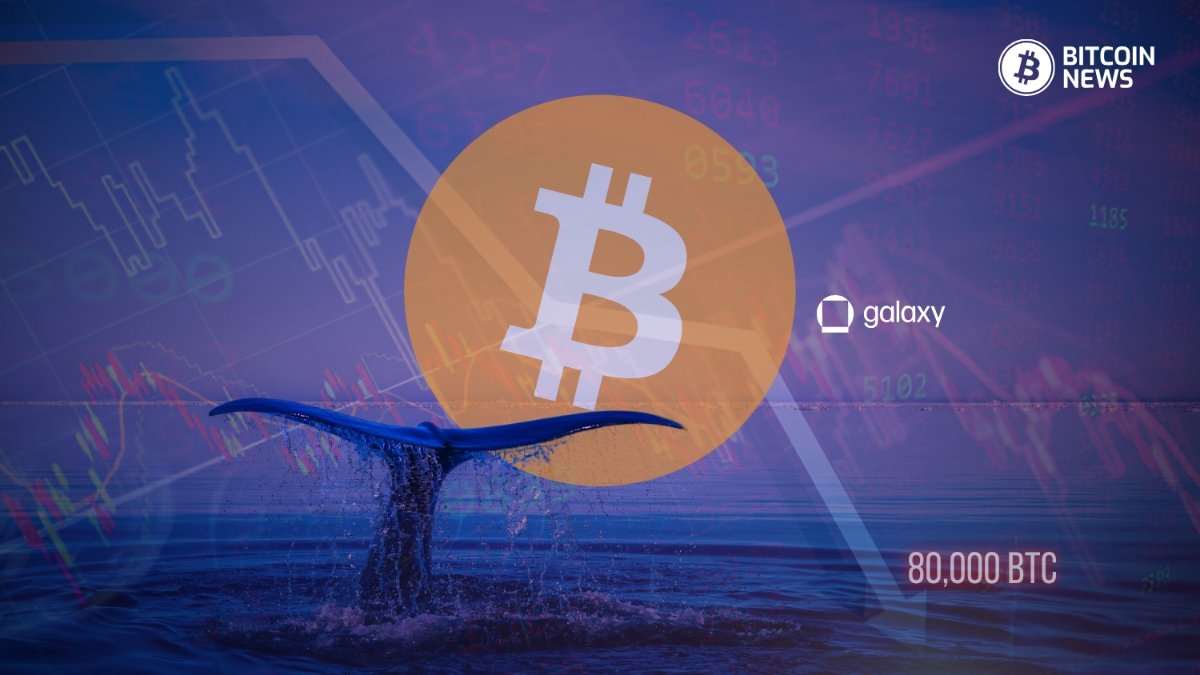In One of the Largest Bitcoin Sales Ever, Early “Whale” Transacts via Galaxy Digital
A prominent early Bitcoin investor, often referred to as a “Satoshi-era whale,” has executed a landmark sale of over 80,000 BTC, representing more than $9 billion in value, according to reports that gained prominence this month.
The transaction was orchestrated through Galaxy Digital, a significant figure within the digital assets sphere, demonstrating a smooth execution despite the colossal scale.
The vendor claimed to have held the cryptocurrency for approximately 14 years, originating from dormant wallets dating back to 2011. Blockchain analyses confirm this specific BTC originated from wallets inactive for a decade or longer.
Galaxy Digital publicly disclosed the deal on Friday, describing it as “one of the largest notional Bitcoin transactions ever.” The company attributed the sale to the investor’s “broader estate planning strategy,” underscoring its strategic nature rather than opportunistic selling.
This event marks a significant juncture in Bitcoin’s lifecycle, representing an unprecedented exit from the earliest days of the market’s inception.
Galaxy emphasized it was “one of the earliest and most significant exits from the digital asset market.” Experts often link long-term holders (whales) to entities or individuals who mined Bitcoin during its nascent phase, when prices were mere fractions of a cent.
CryptoQuant CEO Ki Young Ju suggested the coins potentially originated from MyBitcoin.com, a now-defunct wallet service that succumbed to a hack in 2011 before ceasing operations. He posited Galaxy might have acquired the assets directly from its former owner.
The mainstream perception is that this sale signals increasing comfort among early adopters as Bitcoin’s market matures and regulatory frameworks become more defined.
Despite the enormous transaction size, Bitcoin’s market reacted with relative stoicism. Prices briefly dipped below $115,000 but recovered swiftly throughout Friday, closing above $117,000. This demonstrated a remarkable capacity by the market to absorb the substantial supply injection.
“80,000 BTC, over $9 billion, was sold into open market order books, and Bitcoin barely moved,” commented Joe Consorti, head of growth at Theya.
Trading information confirms Galaxy executed the BTC distribution across numerous cryptocurrency exchanges, further aiding market absorption. Some market participants expressed surprise at the lack of a significant price dislocation.
Analyst Jason Williams stated the entire sale was “fully absorbed by the market,” underscoring Bitcoin’s enhanced maturity and liquidity.
Amidst this transaction, speculation regarding near-term price movements is intensifying. Following the selling pressure, many analysts project potential upside.
Ledn Chief Investment Officer John Glover, citing Elliott Wave principles, anticipates a significant rally, suggesting the market could reach approximately $132,000 by completing Wave iii.
Technical analysts cite various key levels. Ali Martinez identifies $116,095 as support and $118,955 as immediate resistance. While Titan of Crypto suggested a possible short-term pullback to $114,000, a longer-term bullish perspective prevails among many market observers.
Some market projections, based on scenarios from financial institutions like Citigroup, even foresee Bitcoin approaching $199,000 by year-end.
The movement of assets by large holders consistently carries heavy weight in the cryptocurrency markets. Such actions, particularly concerning dormant coins from Bitcoin’s genesis, invariably attract intense scrutiny.
In this specific instance, the whale’s sale reportedly triggered $646 million in liquidations across the broader digital assets market, including $152 million specifically designated as Bitcoin long positions. The swift market stabilization is widely interpreted as an indicator of resilience and maturity.












